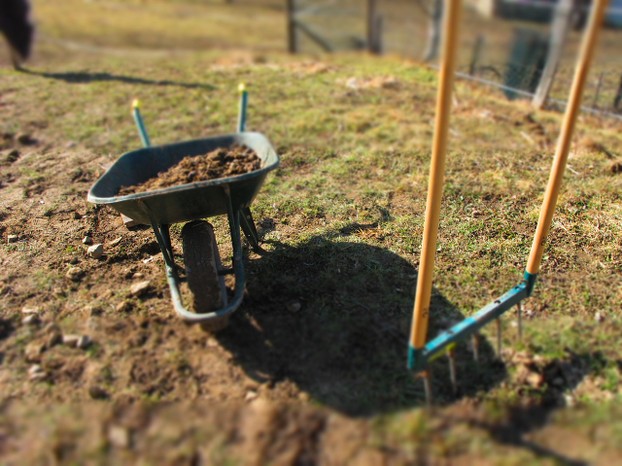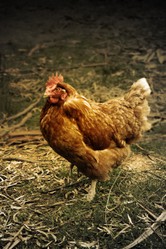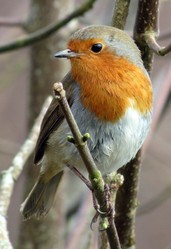"Cultivate the smallest possible amount of land, but do so excellently." This was the motto of the Marachers, nineteenth century French market gardeners, whose meticulous precision and devotion to the highest standards of horticulture produced enough food for themselves, for their Parisian markets and a surplus for export to England, whose burgeoning capital, London, sucked in agricultural produce from not only Britain, but other lands.
The marachers are gone,swamped by the undercutting pressures of big producers and a century of two major wars, but not they are not forgotten and as the world swings towards the need for more intensive production, their time is coming again. The concept of bio-intensive agriculture [and horticulture] began to develop again in California in the 1960s when John Jeavons, who had a microfarm, began to promote it again.Jeavons' agriculture is based on veganism, but bio-intensive agriculture does not have to be, and later on we will see that it is a system that can include animals.
Jeavons system included double-dug raised beds,a feature that might run contrary to the modern idea of no- dig gardening, but like all bio-intensive systems it places great store by compost produced on the farm. However, Jeavons grew compost crops, which he called carbon farming, and while this obviated the need to purchase compost, it ensured that fewer crops were produced on the farm than would have been the case were compost brought in from outside. While sustainability is vital, it is the whole system that must be self-sufficient rather than each individual farm. If food is being sold out of the farm, resources are being lost and so must be replaced from outside.
An example of imported fertility comes at La Ferme du Bec Hellouin discussed below, whose owner has compensated for the low fertility of the land, which according to an archaeologist has not been tilled since the Neolithic age,being used only for pastoral purposes, by importing rich manure from a stable owner glad to get it off his hands. This farm is as bio-intensive as Jeavons' farm, but unlike Jeavons farm, which is ideally a closed system operation intended to be internally self-sufficient, La Ferme du Bec Hellouin provides food for the neighbourhood and so is an open system. [See Permaculture.,issue 94, Winter 2017]
The system works on the maximum usage of land, so bio-intensive agriculture applies the principle that crops, which are companion-planted where possible, should be so closely spaced that at three quarters of their growth their leaves should touch.











 Pilgrimage. A review15 days ago
Pilgrimage. A review15 days ago
 Leo the Fourteenthon 05/09/2025
Leo the Fourteenthon 05/09/2025
 The Melsonby Hoardon 03/25/2025
The Melsonby Hoardon 03/25/2025



Comments
Generally rock dust is applied to the whole garden every three or four years. As for the others I simply applied them every year at times in the season.
Thank you!
It appears to me most convenient if one applies compost, rockdust and seaweed concurrently if different areas demand different treatments.
But what if one area entails all three treatments? Might three treatments be managed over three successive years? If so, which should be the first year, which the second and which the third?
I preferred liquid seaweed, as it can be mixed into the watering can
Thank you!
It sounds so environmentally and soil-wise healthy to use compost, rockdust and seaweed.
Would you preferentially use liquid or meal seaweed?
Would you use all three treatments concurrently or according to staggered schedules?
Building up soil.
Thank you!
The east, the north, the south and the west yards respectively have
elm and wild black- and wine-berry leaves and eastern-white pine needles;
black-cherry, box-elder, silver-maple and willow leaves and eastern-white pine and English- and Irish-yew needles;
chestnut and honey-locust leaves and red-cedar (Virginia-juniper) needles;
black-walnut, box-elder, mulberry and willow leaves and red-cedar (Virginia-juniper) needles.
Which would you use for leaf mould (leaf mold -- yikes! -- in Unitedstatesian ;-{!)?
(Sycamore was the first tree-name in my pre-kindergarten nature vocabulary!)
We call it leaf mould. I have used it, but it is necessary to use whatever leaves are available in your area.in my area Sycamore and beech leaves are common.
Thank you!
Compost applications are a favorite.
Haven't you tended toward leaf compost?
(If so, what kind of leaves might you favor?)
Probably the best way to restore fertility is compost. To replace minerals you can use seaweed in either meal or liquid form or once every few years apply rockdust, ground granite.
Thank you for your comments March 14, 2020, in answer to my previous, same-day questions.
Elsewhere I considered Unitedstatesian customs of metal cans left decoratively and micronutrient-leachingly in home gardens and in lawns needing building-up nutrient-wise.
Might that be a far less tiring way of building up soil health?
(But I wonder how many would be needed ;-D ?!)